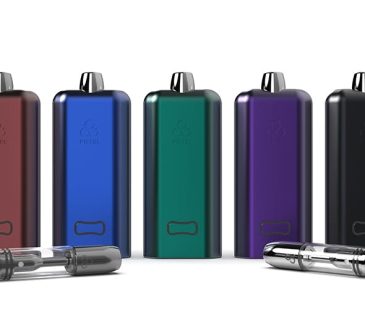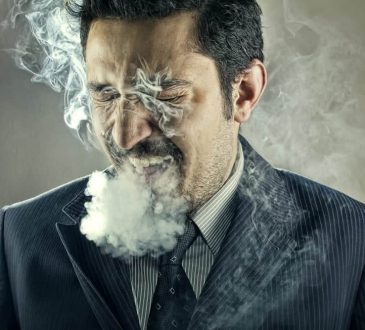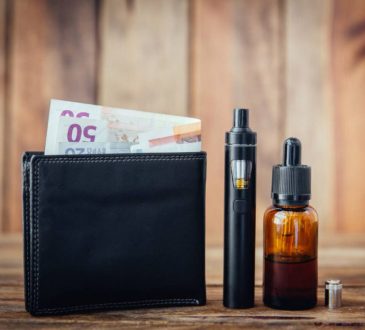
Due to the relatively short period of availability of e-cigarettes in the United States and Europe, our understanding of the long-term effects of vaping on users is still limited.
However, based on the known safety profiles of the chemicals involved, we can conclude that vaping is likely to be less harmful to users compared to traditional combustible cigarettes.
Interestingly, our knowledge of the risks to bystanders may actually surpass our understanding of the risks to vapers themselves. By employing standards for workplace exposure to inhaled chemicals and metals, scientists can estimate whether the toxic constituents present in “secondhand vapor” pose a potential harm to accidental vapers.
To date, there is no substantial evidence indicating that secondhand (or passive) vaping poses a significant threat to the health of non-vaping bystanders.
What is secondhand vapor?
Secondhand vapor refers to the vapor (aerosol) that is exhaled by a person using an electronic cigarette or vaping device, and is then inhaled by individuals in the surrounding environment who are not actively vaping themselves. It is similar to the concept of secondhand smoke from traditional cigarettes.
When a person exhales vapor from an e-cigarette or vaping device, it contains particles and potentially harmful substances that were present in the inhaled aerosol. These particles can include nicotine, flavorings, and other chemicals. While the levels of these substances may be lower in secondhand vapor compared to secondhand smoke, there is still ongoing research to understand the potential health risks associated with exposure to secondhand vapor.
It is important to note that secondhand vapor is a topic of scientific study, and regulations regarding its potential risks and public exposure can vary across different jurisdictions.
What’s in secondhand vapor?
Secondhand vapor, also known as secondhand aerosol, contains various substances that are present in the exhaled aerosol from electronic cigarettes or vaping devices. The exact composition of secondhand vapor can vary depending on factors such as the type of device, e-liquid ingredients, and usage patterns. Here are some common components found in secondhand vapor:
Nicotine: If the e-liquid used in the device contains nicotine, it can be present in the exhaled vapor. However, the levels of nicotine in secondhand vapor are typically lower compared to secondhand smoke from traditional cigarettes.
Flavorings: E-liquids often include flavorings to enhance the taste. These flavorings can range from fruity and dessert flavors to menthol and tobacco-like flavors. When exhaled, these flavorings can be present in the secondhand vapor.
Propylene Glycol (PG) and Vegetable Glycerin (VG): These are the primary base ingredients in most e-liquids. They help create the aerosol when heated and produce the visible vapor clouds. Both PG and VG are considered safe for ingestion and have been used in various food and pharmaceutical products.
Trace Chemicals: Depending on the specific e-liquid formulation and device used, there may be trace amounts of other chemicals present in secondhand vapor. These can include volatile organic compounds (VOCs) and potentially harmful substances, although in significantly lower levels compared to secondhand smoke.
Is secondhand vapor dangerous?
In the updated 2018 evidence review conducted by Public Health England (PHE), experts analyzed new studies on passive exposure to secondhand vapor since their 2015 report on e-cigarettes. Once again, they concluded that “to date there have been no identified health risks of passive vaping to bystanders.”
Another study conducted by Igor Burstyn explored the potential dangers of secondhand vaping by estimating potential exposures and comparing them to occupational exposure standards. His findings indicated that bystander exposures are significantly lower and pose no apparent concern.
Burstyn’s use of the term “orders of magnitude” refers to multiples of 10, such as 10, 100, 1,000, 10,000, and so on. This means that the exposure to toxic chemicals in secondhand vapor is significantly lower and not a substantial threat. The risk to bystanders is 10, 100, or even 1,000 times lower than the risk to the vaper themselves.
However, this does not imply that vapers should feel entitled to vape anywhere without considering the wishes of others. It is important to respect the concerns of family and friends. If a spouse or visitor objects to vaping, vapers should be courteous and thoughtful, and take their vape outside. Additionally, if someone in the household has asthma or another respiratory condition, it is best to avoid exposing them to secondhand vapor, as certain components like propylene glycol (PG) and some flavorings can irritate the airways.
Children, who cannot make informed choices about what they breathe, deserve extra consideration. Vapers should exercise good judgment and be more cautious around children than they would be around adults. There haven’t been specific studies measuring the impact of daily vape inhalation on the lung functions of babies or young children, and it is crucial not to conduct any experiments on children.
In summary, while the evidence suggests that secondhand vapor poses minimal risks to bystanders, it is still essential to respect the concerns and preferences of others, particularly family and friends. Being considerate, especially around individuals with respiratory conditions and children, is crucial for maintaining a responsible and respectful vaping environment.




